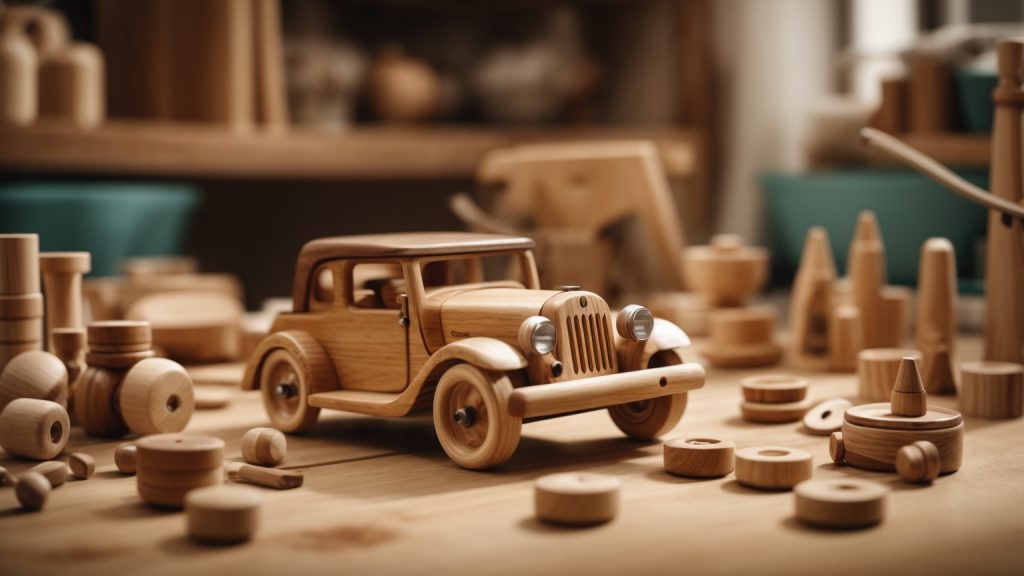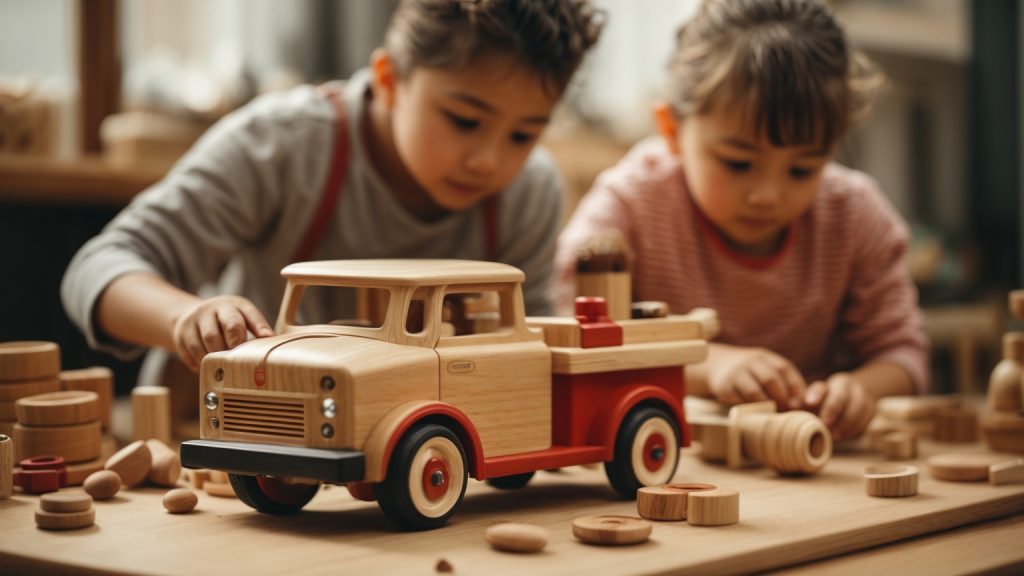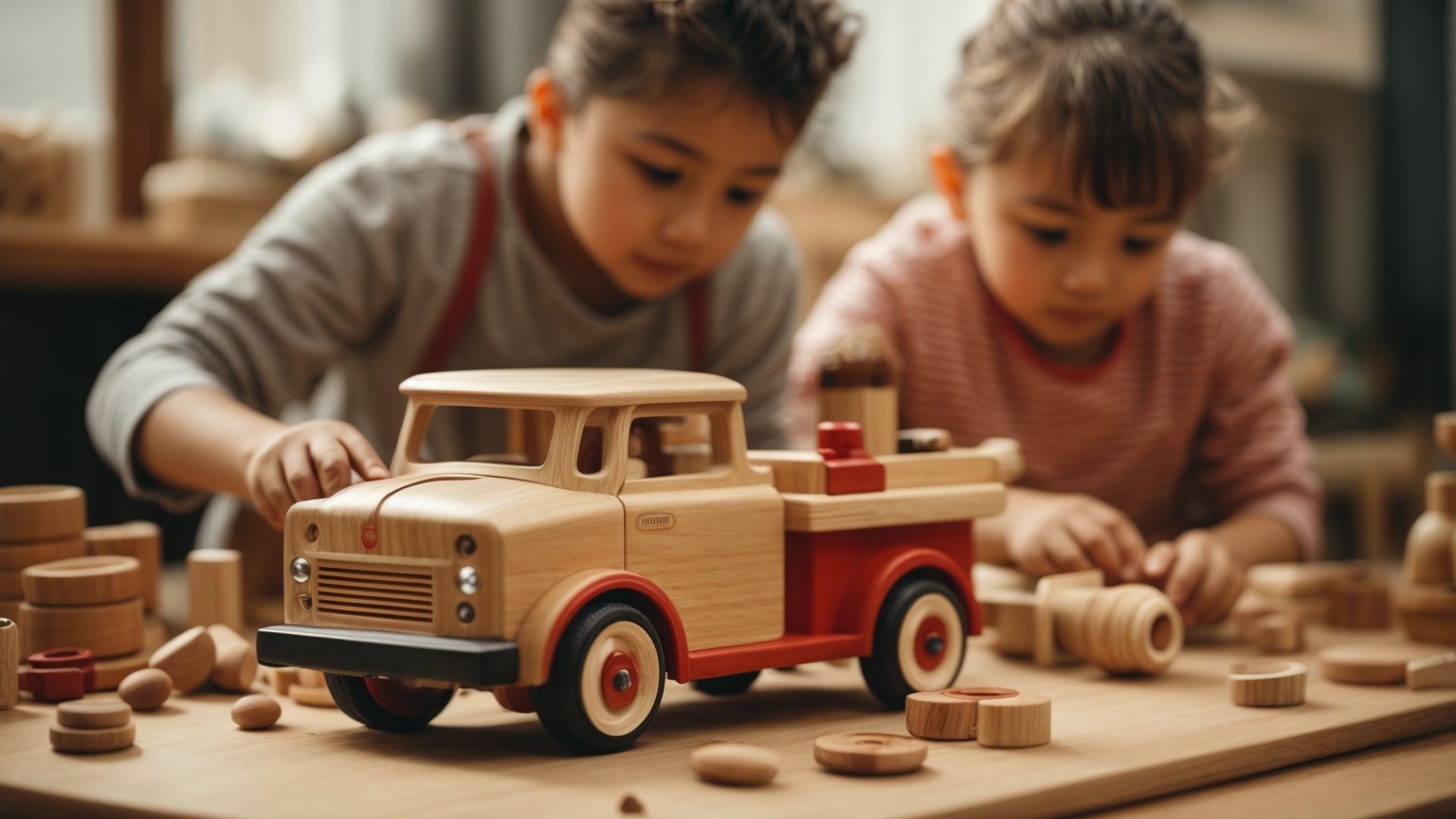If you have wooden toys, you know how important it is to keep them clean and well-maintained. Wooden toys are durable and long-lasting, but they can also accumulate dirt and grime over time. Cleaning wooden toys is not only important for hygiene reasons, but it can also help extend the lifespan of the toys.
Cleaning wooden toys is a simple process that can be done with a few basic supplies. Warm water and a mild cleaning solution are all you need to get started. You can use white vinegar, apple cider vinegar, or a non-toxic cleaning product that is safe for children. Optional extras include a spray bottle for your water mixture and olive oil or mineral oil for moisturizing the wood. In the following paragraphs, we will discuss the best methods for cleaning different types of wooden toys, as well as important factors to consider when cleaning them.
Understanding the Importance of Cleaning Wooden Toys

When it comes to keeping your child safe and healthy, cleaning their toys is just as important as feeding them a balanced diet. Wooden toys are a popular choice for parents because they are durable, long-lasting, and don’t contain harmful chemicals. However, they can also be a breeding ground for bacteria and germs, especially if they are not cleaned regularly. In this section, we will discuss the importance of cleaning wooden toys and provide tips on how to do it effectively.
Preventing Bacterial Growth
Wooden toys can harbor bacteria and germs from your child’s hands, mouth, and the environment. If left unchecked, these bacteria can multiply and cause infections or illnesses. Regular cleaning of wooden toys can help prevent the growth of bacteria and keep your child safe from harm.
One way to prevent bacterial growth is to clean wooden toys after each use. Use a damp cloth with warm water and mild soap to wipe down the toy’s surface. Avoid soaking the toy in water as it can cause the wood to swell and warp. Dry the toy thoroughly with a clean cloth before storing it away.
Another way to prevent bacterial growth is to rotate your child’s toys regularly. This will give you time to clean and dry the toys properly before they are used again. It also reduces the chances of your child coming into contact with bacteria from toys that have not been cleaned yet.
Maintaining Toy Quality
Cleaning wooden toys not only prevents bacterial growth but also helps maintain their quality. Over time, dirt and grime can accumulate on the toy’s surface, making it look dull and unappealing. Regular cleaning can help keep the toy looking new and vibrant.
When cleaning wooden toys, it is important to use the right cleaning products. Avoid using harsh chemicals that can damage the wood or remove its natural finish. Instead, use mild soap or vinegar diluted with water to clean the toy’s surface. Be sure to rinse the toy thoroughly with clean water and dry it with a clean cloth.
In conclusion, cleaning wooden toys is a crucial part of keeping your child safe and healthy. Regular cleaning can prevent bacterial growth and maintain the toy’s quality. By following these simple tips, you can ensure that your child’s wooden toys remain safe, clean, and enjoyable for years to come.
Choosing the Right Cleaning Supplies
When it comes to cleaning wooden toys, it’s important to choose the right cleaning supplies to ensure that you’re not damaging the wood or exposing your child to harmful chemicals. Here are some things to keep in mind when selecting cleaning supplies for your wooden toys.
Natural Cleaning Agents
Using natural cleaning agents is a great way to clean your wooden toys without exposing your child to harmful chemicals. Here are some natural cleaning agents that you can use:
- White vinegar: White vinegar is a great all-purpose cleaner that can be used to clean wooden toys. Mix equal parts white vinegar and water in a spray bottle and use it to clean your wooden toys.
- Baking soda: Baking soda is another great natural cleaner that can be used to clean wooden toys. Mix baking soda and water to form a paste, apply it to the toy, and scrub gently with a soft cloth.
- Castile soap: Castile soap is a mild and gentle soap that can be used to clean wooden toys. Mix a small amount of Castile soap with water and use it to clean your wooden toys.
Avoiding Harmful Chemicals
When selecting cleaning supplies for your wooden toys, it’s important to avoid harmful chemicals that can damage the wood or expose your child to toxins. Here are some chemicals to avoid:
- Bleach: Bleach is a harsh chemical that can damage the wood and expose your child to toxins. Avoid using bleach to clean your wooden toys.
- Ammonia: Ammonia is another harsh chemical that can damage the wood and expose your child to toxins. Avoid using ammonia to clean your wooden toys.
- Harsh detergents: Harsh detergents can also damage the wood and expose your child to toxins. Avoid using harsh detergents to clean your wooden toys.
By choosing the right cleaning supplies, you can ensure that your wooden toys are clean and safe for your child to play with. Remember to always test any cleaning solution on a small, inconspicuous area of the toy before applying it to the entire surface.
Step by Step Cleaning Process
Cleaning wooden toys is an essential part of maintaining their quality and safety. Here is a step-by-step guide on how to clean wooden toys properly.
Pre-Cleaning Inspection
Before you begin cleaning, inspect the wooden toys for any damage or loose parts. If you find any issues, repair them before cleaning. Also, check for any stickers or labels that may need to be removed before cleaning.
Cleaning Procedure
- Start by removing any loose dirt or debris from the wooden toy surface. You can use a soft-bristled brush or a dry cloth for this purpose.
- Next, prepare a cleaning solution according to the type of wooden toy and the level of dirt and grime on its surface. You can use warm water and a mild soap solution or a mixture of white vinegar and water in a 1:10 ratio. Do not use harsh chemicals or abrasive cleaners.
- Dip a clean cloth in the cleaning solution and wring it out until it is damp but not soaking wet. Use this damp cloth to wipe the wooden toy surface thoroughly. Make sure to clean all the nooks and crannies of the toy.
- For stubborn stains or grime, you can use a soft-bristled brush or an old toothbrush dipped in the cleaning solution to scrub the affected area gently.
- Once you have cleaned the entire surface of the wooden toy, rinse it thoroughly with clean water to remove any soap residue.
Drying and Polishing
- After rinsing, use a dry cloth to wipe the wooden toy surface and remove any excess water.
- Let the wooden toy air dry completely before using it again. Do not use a hairdryer or any other heat source to speed up the drying process.
- Once the wooden toy is dry, you can apply a coat of food-grade mineral oil or beeswax polish to protect and preserve the wood. Apply the oil or polish with a clean cloth and let it absorb into the wood for a few hours before wiping off any excess.
By following these simple steps, you can keep your wooden toys clean, safe, and long-lasting.
Tips for Regular Maintenance

Keeping your child’s wooden toys clean is essential for their health and safety. Regular maintenance can help preserve the quality of the toys and extend their lifespan. Here are some tips for maintaining your wooden toys.
Frequent Light Cleaning
Frequent light cleaning can help prevent build-up of dirt and grime on your child’s wooden toys. Here are some tips for frequent light cleaning:
- Use a clean, damp cloth to wipe down the toys after each use.
- Avoid using harsh chemicals or abrasive cleaners that can damage the wood.
- Keep the toys away from direct sunlight and moisture to prevent warping and cracking.
- Store the toys in a dry, cool place when not in use.
Deep Cleaning Schedule
Deep cleaning your child’s wooden toys on a regular schedule can help remove any build-up of dirt and grime that may have accumulated over time. Here are some tips for deep cleaning:
- Use a mixture of warm water and a mild soap solution to clean the toys. You can also use white vinegar or apple cider vinegar as a natural cleaning solution.
- Avoid soaking the toys in water as this can cause the wood to warp or crack.
- Use a soft-bristled brush to gently scrub the toys and remove any dirt or grime.
- Rinse the toys thoroughly with clean water and dry them with a clean, dry cloth.
- Apply a small amount of olive oil or mineral oil to the toys to help preserve the wood and prevent it from drying out.
By following these tips for regular maintenance, you can keep your child’s wooden toys clean and safe for playtime. Remember to always supervise your child during playtime and inspect the toys regularly for any signs of damage or wear.
Safety Precautions While Cleaning
Cleaning wooden toys is an important part of maintaining their quality and safety. However, it is essential to take safety precautions to ensure that the toys are not damaged during the cleaning process. Here are some safety precautions to keep in mind:
Avoiding Water Damage
Wooden toys can easily get damaged if they are exposed to water for a prolonged period. Therefore, it is important to avoid using too much water while cleaning them. Here are some tips to help you avoid water damage:
- Use a damp cloth instead of soaking the toy in water.
- Wipe the toy with a dry cloth immediately after cleaning it with a damp cloth.
- Avoid using hot water, as it can warp the wood.
- Do not use a high-pressure water spray to clean the toy.
Ensuring Toy Safety After Cleaning
After cleaning the wooden toy, it is important to ensure that it is safe for your child to play with. Here are some tips to help you ensure toy safety after cleaning:
- Check the toy for any loose parts or splinters that may have come loose during cleaning.
- Ensure that the toy is completely dry before giving it to your child to play with.
- If the toy has any cracks or chips, do not give it to your child to play with. It may be unsafe and could cause injury.
- If you are unsure about the safety of the toy after cleaning, consult the manufacturer or a toy safety expert.
By following these safety precautions, you can ensure that your child’s wooden toys are clean and safe for playtime.
